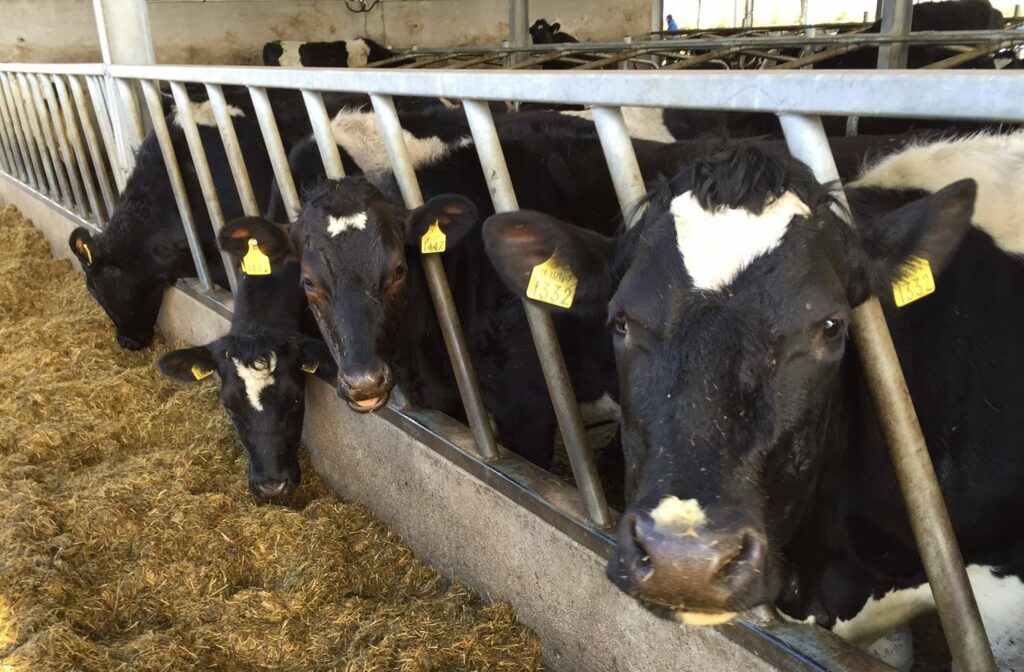With fodder reserves forecasted to be tight this year and good quality feeding straw difficult to source, all signs point toward a challenging winter ahead for many stock farmers.
The sustained poor weather over the past two months has resulted in the early housing of stock. Farmers are also struggling to get a suitable weather window to harvest quality forage to help bolster their reserves.
The coming together of these factors has resulted in the possibility of another forage crisis next spring – especially along our western coast.
In situations where a forage shortage looks imminent, corrective action should be taken as soon as possible.
Establishing feed requirements and conducting a forage budget should be the first move in this regard. If the budget shows that there is 50% of forage stocks available to meet requirements, farmers still have options.
Purchasing of straights, liquid feeds, compound feeds or forages – along with selling surplus stock – are all alternatives that can be used. When ground conditions permit, farmers should also aim to shorten the winter period by as much as possible.
Quantity and quality
Knowing the quality of the available forage at hand is critical for both forage budget calculations and also determining what supplementary feeds will be required. If not already completed, forage analysis should also take place on farm as soon as possible.
Results obtained from these analyses will give a clear indication of the energy, protein, fibre, dry matter (DM) and dry matter digestibility (DMD) values of the forage.
This statement also rings through if a decision is made to purchase external forages. If no analysis is available from the potential seller, an agreement should be made that no deal will take place if samples taken return analysis figures below expectation.
Forages harvested towards the back end of the summer and into early autumn will almost certainly be of lower DM and DMD due to poor preservation and possible soil contamination at harvesting.
Alternatives
Purchasing straights or compound feeds as a forage substitute will be the main option used by most farmers.
Barley, wheat, maize and molasses would be considered as the premium energy feeds. Protein sources include: rapeseed; maize gluten; and soya bean meal. Maize distillers is very useful due to its high-energy content.
Available digestible fibres include: citrus pulp; soya hulls; and beet pulp. Depending on their trading prices, these feeds can be quite cost effective when prices are worked back to the cost of animal performance.
Straights also allow for forage to be saved by moving forward animals onto ad-lib meal diets. Such a move allows forage to be prioritised towards growing cattle and lactating cows.
However, it’s important to note that care should be taking if ad-lib feeding occurs; incorrect management can lead to digestive upsets, which in turn can impede animal growth rates.
Using molasses
The use of molasses liquids is particularly effective in cases where home-saved or purchased forage quality is low.
The high palatability of molasses blends makes them an ideal supplement for poor-quality hay and silage. This occurs through increasing DM intake, while also enhancing the overall nutritive value of the forage.
Moreover, liquid feeds are the ultimate compliment for total mixed ration (TMR) diets. Not only do molasses blends add energy and protein to the diet, their high palatability helps mask other unfavourable straights.
In addition, their unique physical characteristics facilitate the distribution of nutrients and minerals throughout the feed; insuring safe and uniform consumption.
Premier Molasses’ ingredients consist of sugar cane molasses (energy), condensed molasses solubles (protein), and glycerine (energy).
Using blending facilities, the Premier Molasses is able to offer high-quality blends of these ingredients; providing flexible energy and protein levels and handling characteristics to meet each farm’s requirements.
The Premier Molasses range of liquid feeds is suitable for all types of stock including: dairy cows; beef cattle; sheep; pigs; and horses.





